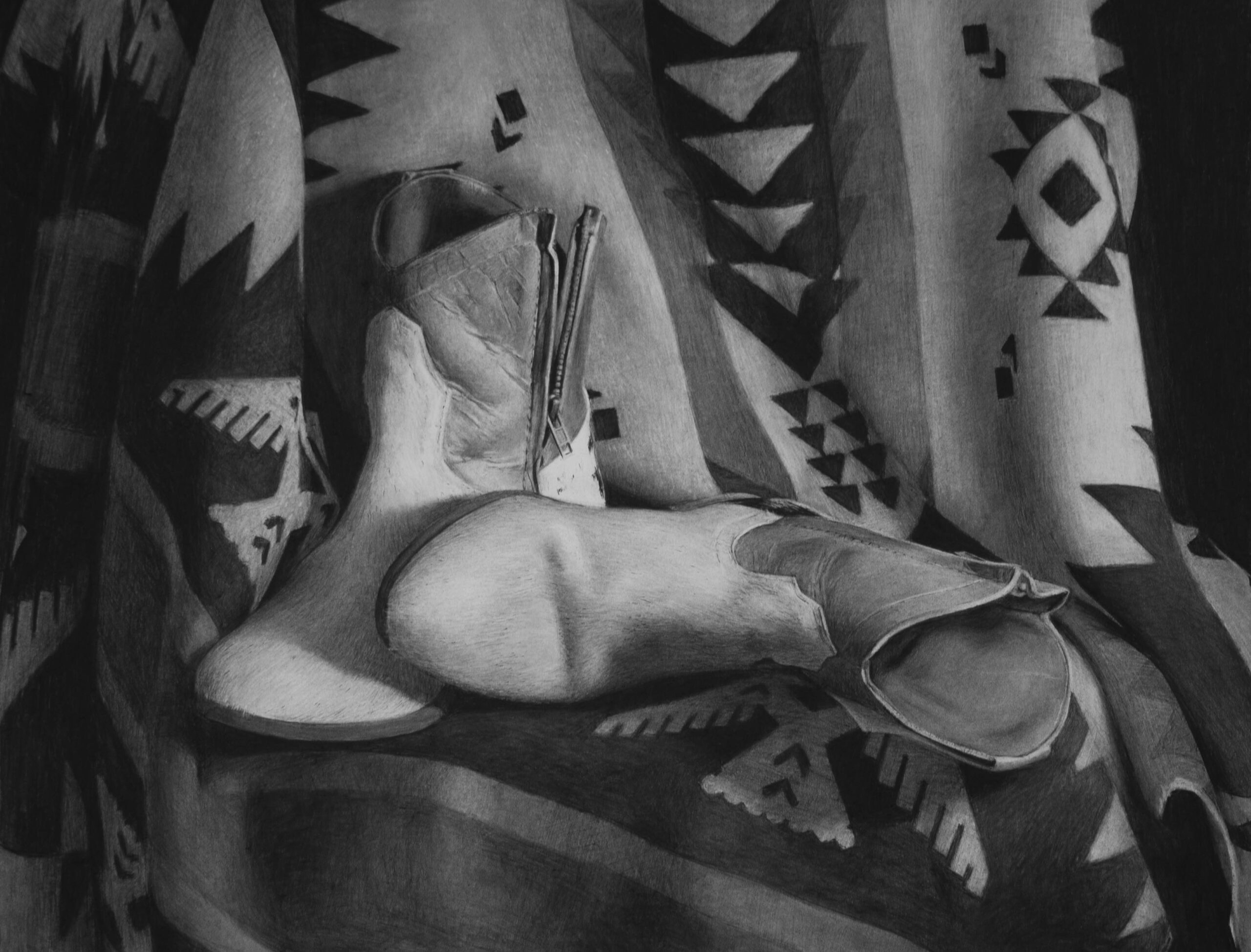Moving back to Canada after three years in Niger is giving me a new appreciation for Canadian culture. I want to explore Western themes with my artwork. My family has some Metis heritage as well as an interest in farming and ranching.
I was inspired by the interesting textures in the leather on these boots as well as the cowhide. I wanted to challenge myself by accurately depicting these different textures using charcoal.

